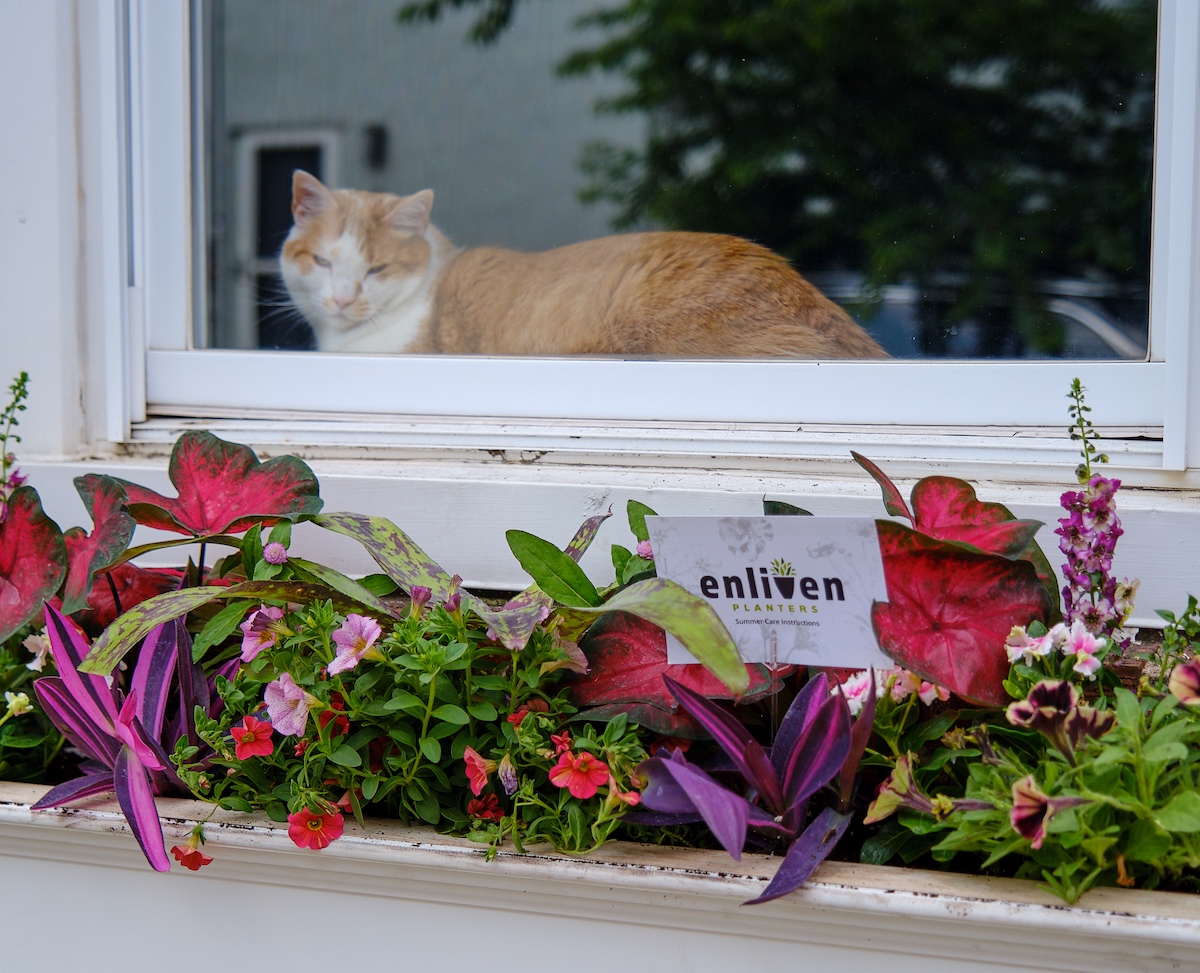Walk around downtown Philadelphia. You want flowers? We got flowers. The streetscape has been transformed by living works of art. Textures and colors burst from window boxes and planters.
At thousands of homes in the city and surrounding suburbs, these magical mini gardens are the work of Enliven Planters. And you can tell the difference between DIY and Enliven.
Enliven is growing fast. Cofounder and former landscape designer Paul Kawoczka reports around 3,000 customers, up by a third over the past year, and around $5 million in revenue. He and Dan Nichols created the now-50-person company in 2013, and recently opened a facility in East Falls. He estimates it’s the biggest container garden company in the country. Over the past decade, Enliven has brightened Philadelphia with a gardening subscription service that acts like a tech company, with one major difference: Enliven thinks inside the box. The window box.
The company’s primary product is a subscription of four urban arrangements per year. Residential and commercial customers can also order one-offs, priced by size. Planter and window box refill costs range from about $100 to over $300.
“We’re a super data-driven company,” Kawoczka said. “But we’re coming out and creating something physically. I don’t see how that’s going to be replaced by a computer.”

Meow. (Courtesy photo)
Enliven’s marketing and administrative functions capitalize on business software and data analysis, starting with the industry-specific program SingleOps. A third of customers are attracted by online advertising, a third via organic, and a third by word of mouth, per the cofounder.
Enliven’s bet is that businesses that focus on the physical world have staying power. Amid news of tech layoffs and automation potentially impacting hundreds of millions of jobs, entrepreneurs would be smart to consider work that’s enhanced, rather than replaced, by tech.
There is, of course, a downside to being a physical business.
“You can only do so many planters in a day with the amount of traffic, parking and physical labor required,” Kawoczka said. “It’s a give and take. There’s no way we could have done this 20 years ago without route tracking, CRM and purchasing software.” Company leaders plan well in advance for the purchase of thousands of plants. “If we didn’t have a subscription service and that data track, we would just be guessing.”
Enliven wants to expand from the Philadelphia region across the Northeast Corridor to New York and DC. Yet Kawoczka knows exponential expansion requires more people, vehicles and plants: “The physical world ends up being a barrier,” and tech can only get it so far.
In the race toward digitization, some aspects of our world, like the vibrant window boxes of Philadelphia, cannot be boxed into an algorithm. It’s this intersection of tech and tactile, data and daisies, that Enliven captures. There’s an enduring need for a balance between the digital and the physical. In the future, businesses that bridge the divide between digital innovation and human needs will be part of the growth industry.
Join our growing Slack community
Join 5,000 tech professionals and entrepreneurs in our community Slack today!
Donate to the Journalism Fund
Your support powers our independent journalism. Unlike most business-media outlets, we don’t have a paywall. Instead, we count on your personal and organizational contributions.






